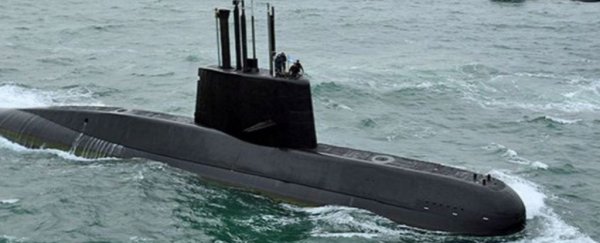As days, then weeks passed with no contact from the ARA San Juan submarine, Argentines began to accept the fact that what had once been an aging staple of the nation's naval fleet had been suddenly and tragically transformed into a 60-meter-long metal tomb.
But as the nation mourned the anniversary of the San Juan's disappearance Thursday, painful questions lingered: What horrible tragedy had befallen the submarine? And, most importantly, would the craft and the bodies of the 44 sailors aboard ever be recovered?
In a bittersweet announcement Saturday, authorities said they may soon have answers to those twin mysteries. The San Juan has been found nearly 3,000 feet beneath the ocean's surface in waters off the Valdes Peninsula in Argentine Patagonia, according to the Associated Press.
Argentine Defense Minister Oscar Aguad later said the government lacked the proper technology to recover the submarine, adding that officials still need to determine next steps, the AP said.
Almost exactly a year ago, the diesel-electric ARA San Juan was returning to its base south of Buenos Aires after a routine mission to Ushuaia, near the southern tip of South America, the Argentine Navy said.
Then, suddenly, it went silent.
If trouble arose, the crew of the submarine was supposed to surface and essentially phone home, but that never happened.
Still, hope lingered despite the radio silence. The submarine was full of dozens of trained and resourceful sailors. And the San Juan had multiple ways of communicating, as well as an ample supply of food and oxygen.
Even if the sub couldn't communicate or surface, authorities hoped they could find it before it was too late.
The Argentine navy called in reinforcements from up and down the Western Hemisphere, an international team from the United States, Britain, Brazil and Chile and a dozen other countries combining manpower and technological know-how.
But in those initial days of the search, the news kept getting worse.
The search-and-rescue ships were battered by 50 mph winds and 20 foot waves, sour weather that complicated the effort to find a craft that had a finite amount of food and air.
And authorities disclosed that just before the sub went missing, the captain reported that water had entered the engines' snorkel and short-circuited one of the sub's batteries, although he said the issue had been contained, according to the Associated Press.
The German-built craft was refitted between 2008 and 2014, a complicated process in which the submarine was cut in half before the engines and batteries were replaced, the Associated Press said. But even a tiny mistake during the refit could potentially put ship and crew at risk.
A short time after the captain's warning, an explosion was detected near the last known location of the submarine. The navy has said "a concentration of hydrogen" caused by the battery problem could be responsible for the blast.
But investigators found responsibility also lay up and down the military ladder.
President Mauricio Macri promised a full investigation into the blast, the Associated Press reported, and appointed a federal judge to oversee the probe. Police raided naval bases as part of the investigation in January and the head of the navy was dismissed. The investigation found that navy officials allowed the submarine to go on an extended mission despite the mechanical problems.
But as military officials faced repercussions on land, the location of the sub remained a mystery, and the search continued.
In September, the Argentine government contracted the U.S. company Ocean Infinity, known for finding wrecks lost at sea. The government said it would pay the company $7.5 million if it found the location of the missing submarine, according to ABC News.
This week, the company sent out mini-submarines to the seabed and one ultimately returned with definitive photo evidence of the wreckage — on the last day of the company's mission.
#ARASanJuan #LaBúsquedaContinúa Actualización: La empresa informó nuevo punto de interés en el Sitio 1 área 15A-4, a 800 mts de profundidad. El punto de interés tiene una dimensión de 60 mts de longitud. Hora de arribo al área para iniciar investigación 19:00 hs aproximadamente. pic.twitter.com/l5k8p8Zjye
— Armada Argentina (@Armada_Arg) November 16, 2018
Marta Yáñez, the federal judge who is investigating the San Juan's disappearance, said finding the wreckage brings the country one step closer to putting the remaining mysteries to rest.
"It's one thing to do guesswork," she said. "It's a whole different matter to analyze the images we have so specialists can assess what really happened."
2018 © The Washington Post
This article was originally published by The Washington Post.
